Get ready for leaf peeping season! New maps show where to view the best foliage this Fall
The US is starting to feel a bit of a chill in the air and that means fall is just around the corner, when bright green leaves turn to shades of orange, yellow and brown.
If you’re wondering when your city will be covered in beautiful fall foliage, this interactive map predicting peak viewing dates should help.
The new season has already started in New England and in some parts of Washington, North Dakota and Montana.
On September 25, all of the northern states and some parts of the West Coast will be covered in fall colors.
Midwestern states like Iowa, Kansas and Ohio will be in full fall color on October 9, but those in the South will have to wait until October 30 to see the first signs of the season.
Although by November 13, only the southern states, including Arkansas, Texas, Oklahoma and Florida, will have green, while the rest of the country will be out of peak season.
The map, which can be viewed at SmokyMountains.comwas created by David Angotti.
On September 25, all of the northern states and some parts of the West Coast will be covered in fall colors
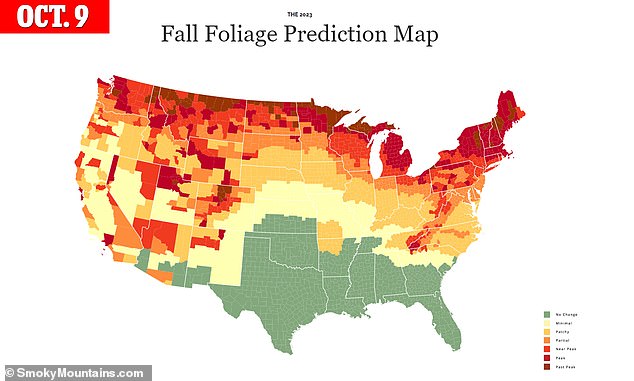
Midwestern states like Iowa, Kansas and Ohio will be fully covered in fall colors by October 9.
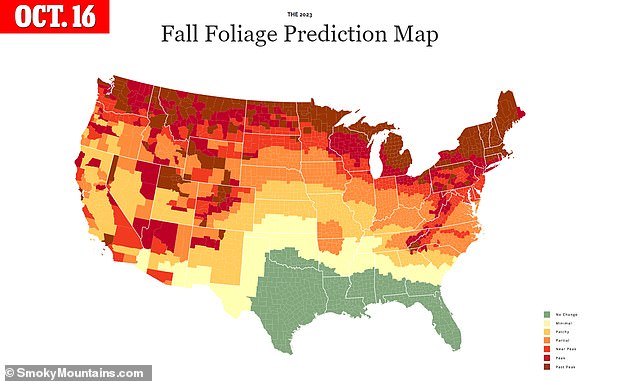
With the exception of the southern states, all other parts of the country will be covered in fall colors.
The predictive map uses a complex algorithm that calculates more than 37,000 pieces of information to accurately predict when the autumn peak will occur at the provincial level.
And while it’s not 100 percent accurate, it’s a tool used by avid leaf watchers as they plan their annual trips to see the spectacular colors across the country.
Leaves can change color from mid-September to early November. Typically the second and third weeks of October are marked as peak times, but this may vary depending on location and local weather conditions.
When autumn leaves fall to the ground, they gradually break down and form a nutrient-rich layer on the forest floor. This layer acts like a sponge, absorbs water and provides food for trees and plants. It helps them get healthy in the spring.
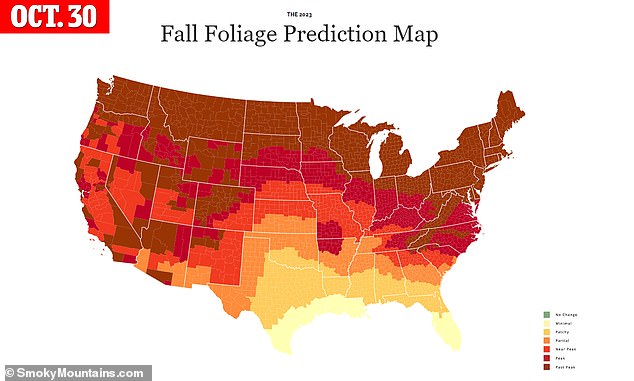
By late October, the entire US will experience fall foliage and most northern states will be past their peak season
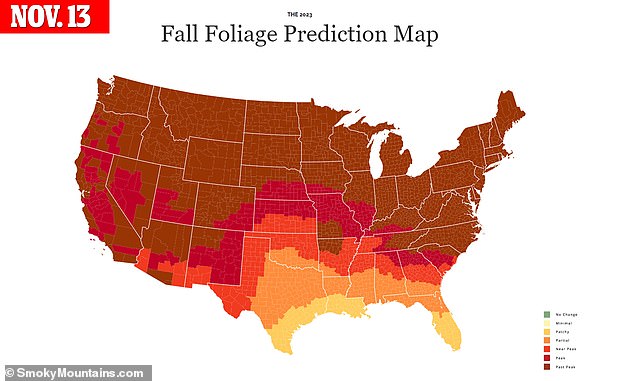
By November 13, only the southern states, including Arkansas, Texas, Oklahoma and Florida, will have foliage, while the rest of the country will be past peak foliage season
So while leaves that fall in the fall protect trees during the winter, they also help trees survive and thrive in the spring and summer. This natural cycle keeps trees healthy and sustainable year after year.
The green on the map marks trees that have not yet changed color and brown is past peak, but the two shades of red indicate ‘near peak’ and ‘peak’.
Compared to last year, fall foliage will appear earlier in 2023. Most of the country experienced the season on October 17 in 2022, but by October 9 this year, a majority of states will be covered in fall colors.
Data has shown that climate change is the reason why autumn has arrived early in the US and other parts of the world.
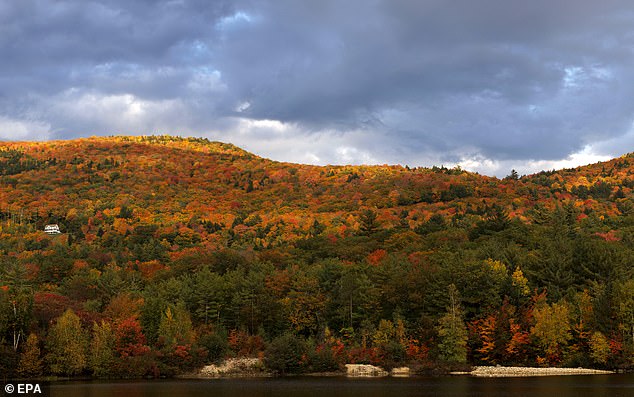
Autumn foliage shows changing colors in Woodstock, New Hampshire, USA last October. Due to climate change, fall in the US will start earlier than last year
The reason climate change is bad for fall leaves has a little to do with plant biology.
When the days get shorter and temperatures drop, the chlorophyll in the leaves is broken down, causing them to lose their green color. The green gives way to the yellow, red and orange hues that make for dramatic fall displays.
As the planet warms, dry areas are expected to become drier and wet areas will receive more precipitation. This extreme weather caused stress on trees in areas that receive minimal rainfall.
This stress can cause leaves to completely lack fall color and simply die and fall off instead of following the natural process.
These trends are impacting the aesthetics of fall foliage, as well as raising agricultural and water supply concerns, and are expected to become more drastic in the future.
